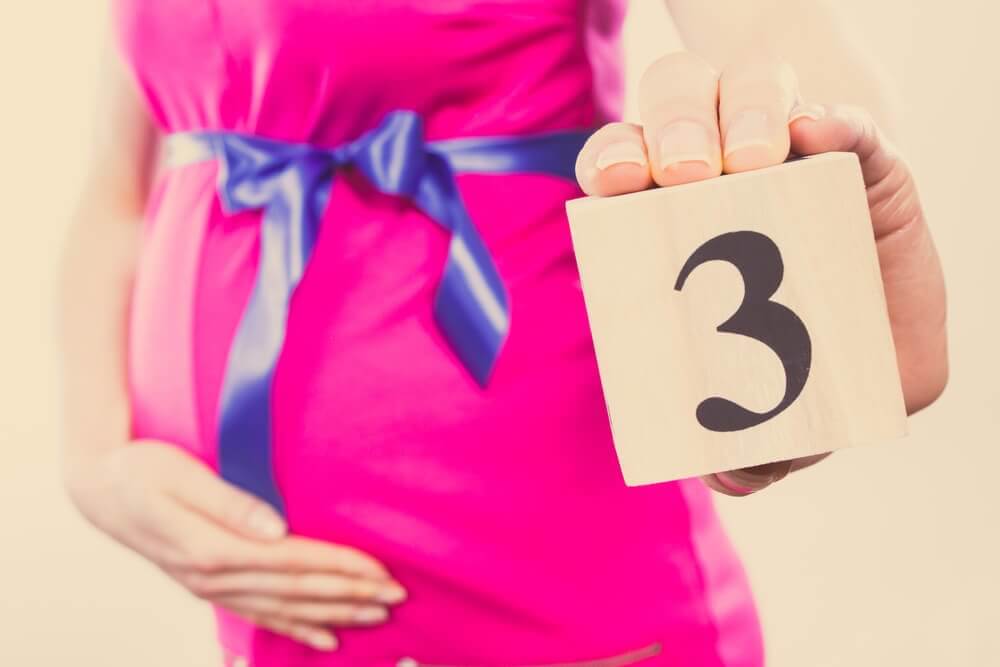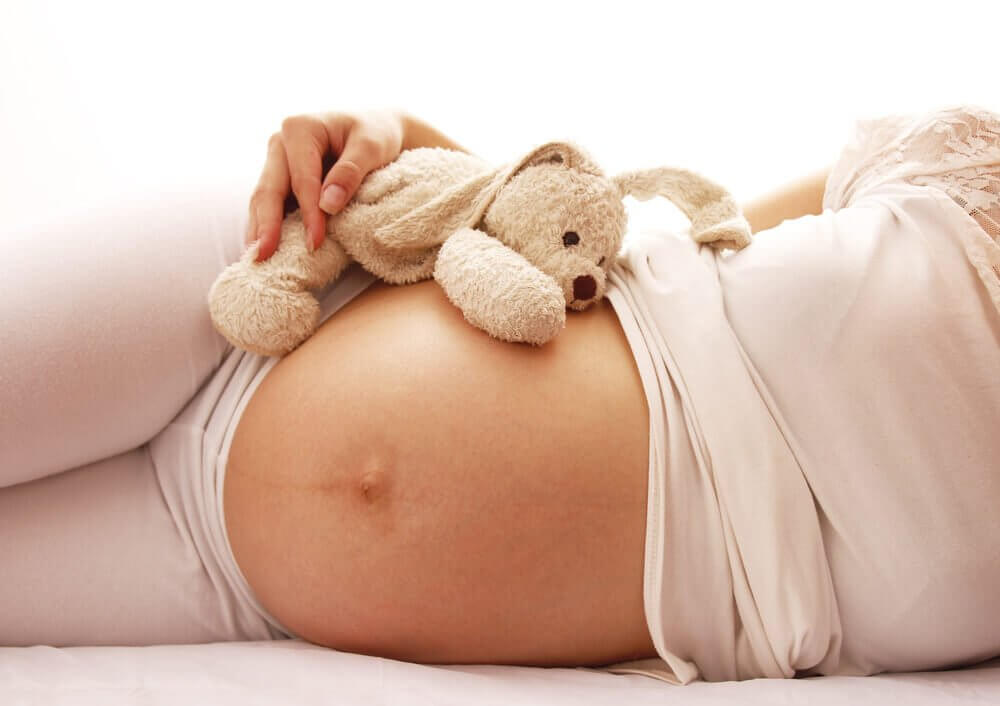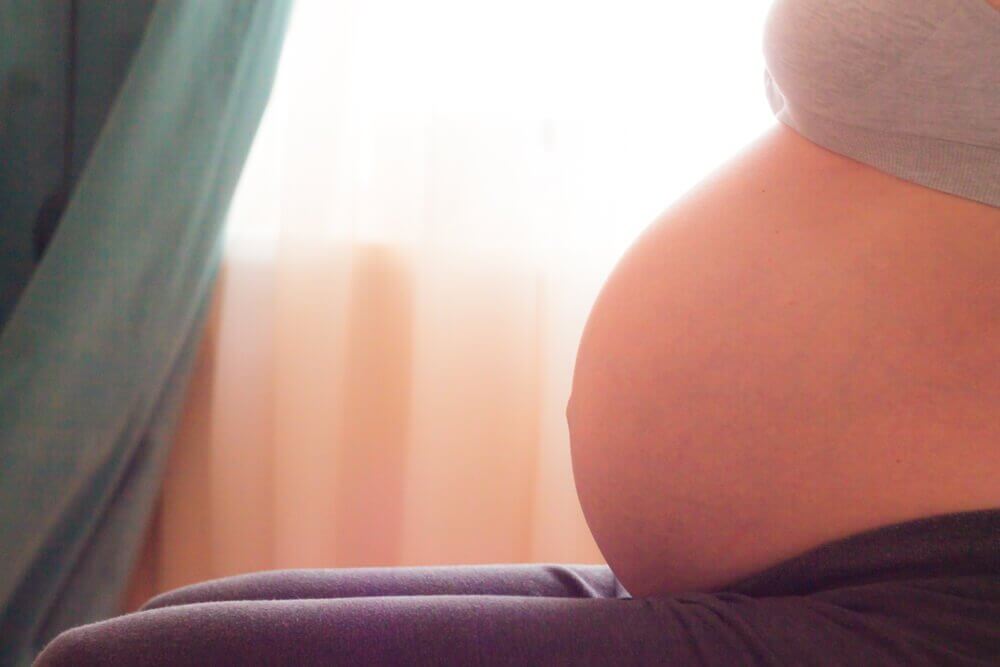Stages of Pregnancy Month-By-Month


Reviewed and approved by the doctor José Gerardo Rosciano Paganelli
The stages of pregnancy
There are 9 months of pregnancy that involve the gradual development of the embryo. It all begins with a tiny zygote that grows to become a baby.
The first month

The first week of pregnancy begins in the last week of menstruation. In the second week, a group of ovarian follicles develops. From that group, only one plays a role in pregnancy. The follicle releases the oocyte in the third week, which travels through the Fallopian tubes.
Cells continue to divide until they form three different types of cells, which will later become the base of the baby’s tissue. The cells that will form the backbone also form at this time. In this stage, the embryo is so small that it still is invisible in an ultrasound scan.
However, the mother might also begin to notice subtle symptoms in this stage. However, she will likely only become aware of her pregnancy upon missing her next period.
Find out if It’s Possible to Get Pregnant Naturally at 45
The second month
The second month is crucial because:
- The heart, a vital organ for the future baby, develops
- The formation of the spinal cord, brain, intestine, and skin begins
- The eyes, ears, nose, and upper lip also begin to form
It’s a busy month in terms of evolution as the embryo begins to acquire human form. The changes in the mother aren’t yet noticeable, but she may begin to feel some symptoms such as nausea, vomiting, and tiredness, as pointed out in this article published in Matronas Profesión.
The third month

In the third month, the embryo grows into a fetus.
- The future baby should already have all the organs, which will continue to develop throughout the pregnancy
- The genitals form but the baby’s sex is still uncertain at this point
- The fetus can grow up to 7 cm long and weigh about 15-20 grams
The mother will start to gain weight in the third month. Mothers usually gain about 10% of their total body weight in their entire pregnancy. At the end of the third month, symptoms such as nausea and vomiting often subside as hormone levels stabilize, reducing the risks of a natural abortion.
The fourth month
- At this point, Lanugo, a fine body hair, covers the fetus.
- The fetus’ vocal cords develop and the epidermal folds also form on the palms and fingers.
- In this stage, the fetus’ eyes are normally large but remain closed. The eyes are still quite far apart, but the face is now well defined.
- The neck is completely distinguishable at this point
- Teeth begin to form
- As for size, the fetus can measure between 4-9 inches. and can weigh 0.33-0.37 pounds.
- The development continues with the fetus’ sweat and oil gland functions.
Meanwhile, the size of the mother’s abdomen continues to increase, as does her body weight. In the fourth month, the baby moves often, so it’s normal to notice the baby’s movements.
Learn about The Linea Nigra: A Reflection of Pregnancy
The fifth month

- In the fifth month, the baby’s heart begins to beat stronger.
- The baby also begins to develop the sound and light senses.
- At the end of this month, the baby’s second row of teeth will already be formed.
- In addition, millions of neurons form in the brain.
- The baby might weigh anywhere from 0.50-0.54 pounds and can grow to be 8-10 inches.
It’s in this month where the mother’s belly button begins to stick out. The symptoms of the initial stages of pregnancy disappear, and other ones may show up, such as a burning sensation in the stomach or nasal congestion.
The stages of pregnancy – the sixth month
- The baby’s eyebrows form in this month as well as the hair, eyelashes, and muscles according to Juan V. Ramírez, a professor of Obstetrics and gynecology at Universidad de Valencia.
- The baby can already recognize and respond to stimuli perfectly, such as music.
- The baby might continue to grow to be 10-12 1/2 inches and weigh anywhere from 0.99-1.65 pounds.
In the sixth month, you can feel the baby’s body from the other side of the abdominal wall. The baby’s skin will also become more opaque and stronger. In addition, the little one will be able to blink and carry out other actions such as sticking out their tongue. The body’s proportions will begin to even out with the head.
The second trimester ends with the sixth month and the pregnancy is evident. At this point, the mother’s stomach is quite large and the fetus weighs a considerable amount, which will affect the mother. She might experience back pain and other symptoms when in certain positions.
The seventh month

- In this stage, the baby’s lungs development and the skeleton grows stronger
- Body mass starts to increase, which allows the baby’s body to control its temperature after birth
- Pigments become visible in the iris and skin
- Lastly, the lanugo that once covered the fetus’ body disappears.
- The fetus can be around 13-15 inches in length and can weigh about 2 1/2-3 pounds.
In this stage, the mother might fight certain movements difficult to carry out and feel constant pressure on her bladder due to the baby’s growing size. As a result, she may go to the bathroom more frequently.
The eighth month
- The lanugo continues to disappear and the baby grows in both weight and length
- At the end of this month, the fetus will have gained around 50% of the total weight gained throughout the entire pregnancy
- The lungs and smell neurons will also be almost completely developed at this point
- The baby may begin to hiccup due to swallowing the amniotic fluid, which also causes sudden moments.
Mothers often experience acid reflux or constipation in this month. They’re common symptoms that result from the increase in the body’s progesterone levels.
Stages of pregnancy – the ninth month

- In the ninth month, the baby moves downward toward the pelvis and the baby’s head begins to line up in preparation for the delivery
- At this point, the baby’s stomach and intestines are fully functional
- In addition, the skin is softer and continues to redden until reaching its final tone
- At the end of the ninth month, the baby should be around 17 inches long and weigh anywhere between 4-6 pounds
- The baby can now breathe while sucking or swallowing
- In addition, the baby’s body can now produce its own blood
This month marks the end of pregnancy and by now, it’s normal for the mother to feel exhausted. The movements are more abrupt and the mother feels kicking. This is because the baby has little room to move.
About the stages of pregnancy
The days and nights seem longer than usual, but, at the same time, you tend to be anxious about the arrival of your baby. Medical control is important in each of the stages or cycles of pregnancy, but it becomes essential in the last month. Thus, consult a doctor if the expectant mother notices any unusual symptoms.
All cited sources were thoroughly reviewed by our team to ensure their quality, reliability, currency, and validity. The bibliography of this article was considered reliable and of academic or scientific accuracy.
- Francés Ribera, L. (2010). Náuseas y vómitos en el embarazo. Matronas Profesión, 2010, vol. 11, num. 1, p. 26-28. http://diposit.ub.edu/dspace/bitstream/2445/29053/1/581303.pdf
- Ramírez, J. V. (2002). FISIOLOGÍA FETAL.. Valencia. Obtenido de https://www.uv.es/jvramire/cursos%20passats.htm http://maestrosdelsaber.com/material/libros/Concepcion%20Humana,%20Parto%20y%20Post%20Parto/Gestacion%20su%20Desarrollo/Es%20Gestacion%20Ramirez,%20Juan%20-%20Etapas%20del%20Desarrollo%20Fetal.pdf
This text is provided for informational purposes only and does not replace consultation with a professional. If in doubt, consult your specialist.








